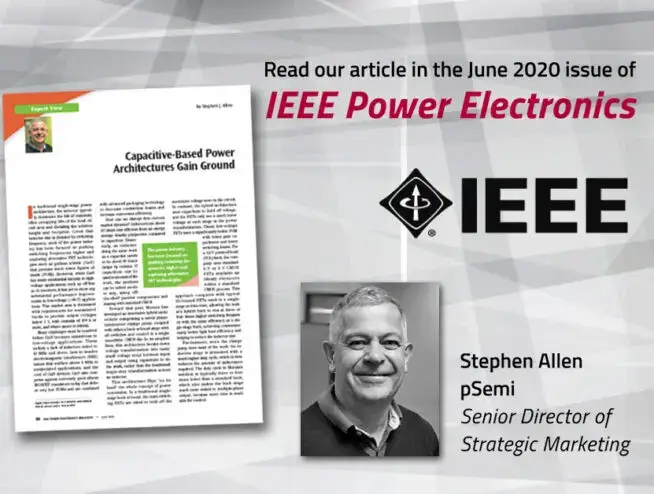The June issue of IEEE Power Electronics Magazine features an “Expert View” article written by pSemi senior director of strategic marketing, Stephen J. Allen. In the article titled “Capacitive-Based Power Architectures Gain Ground,” he describes how the power industry has been focused on pushing switching frequencies higher and exploring alternative FET technologies.
He further explains how Murata has developed an innovative hybrid architecture comprising a novel phase interleaved charge pump coupled with either a buck or boost stage with all switches and control in a single monolithic CMOS die. In its simplest form, this architecture breaks down voltage transformation into many small voltage steps between input and output using capacitors to do the work, rather than the traditional single-step transformation across an inductor. Murata confidently expects capacitive-based power conversion to become mainstream in low-voltage conversion, and the company has a slew of new product introductions based on this concept planned throughout 2020.
Click the following link to read the full article: “Capacitive-Based Power Architectures Gain Ground.”
